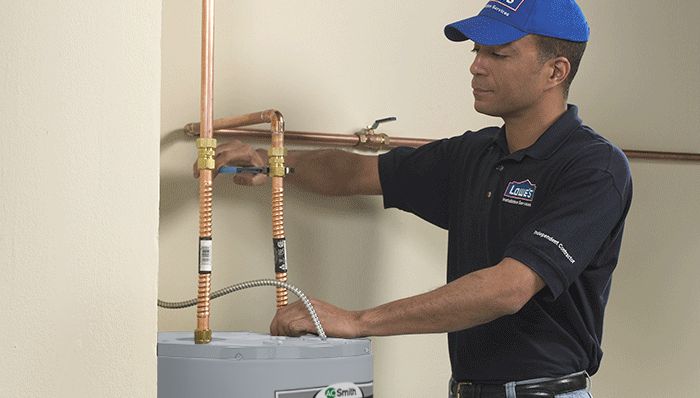Simple Steps to Maintaining Your Home's Hot Water System
Simple Steps to Maintaining Your Home's Hot Water System
Blog Article
We've stumbled on this article relating to How to Maintain Your Water Heater & Prolong its Life listed below on the internet and decided it made sense to relate it with you in this article.

Hot water is important for daily comfort, whether it's for a revitalizing shower or cleaning recipes. To guarantee your warm water system runs effectively and lasts longer, normal maintenance is crucial. This short article offers useful suggestions and understandings on exactly how to preserve your home's hot water system to prevent disturbances and costly repair work.
Introduction
Keeping your home's hot water system may seem overwhelming, but with a couple of simple steps, you can ensure it runs smoothly for years to come. This guide covers every little thing from recognizing your hot water system to do it yourself upkeep ideas and knowing when to call expert assistance.
Importance of Maintaining Your Hot Water System
Routine upkeep not just prolongs the lifespan of your hot water system however additionally ensures it operates efficiently. Overlooking upkeep can lead to lowered efficiency, higher power costs, and also early failing of the system.
Indicators Your Warm Water System Requirements Upkeep
Knowing when your hot water system needs attention can protect against major concerns. Watch out for signs such as inconsistent water temperature level, weird noises from the heating unit, or corroded water.
Understanding Your Warm Water System
Before diving into upkeep tasks, it's useful to understand the standard elements of your warm water system. Typically, this consists of the water heater itself, pipelines, anode poles, and temperature controls.
Regular Monthly Upkeep Tasks
Normal regular monthly checks can aid catch small issues before they escalate.
Purging the Hot Water Heater
Flushing your hot water heater removes debris build-up, improving efficiency and extending its life.
Checking and Replacing Anode Rods
Anode poles prevent corrosion inside the tank. Examining and replacing them when worn is vital.
Evaluating and Adjusting Temperature Settings
Adjusting the temperature settings ensures optimal performance and security.
DIY Tips for Maintenance
You can perform several maintenance jobs on your own to maintain your warm water system in leading problem.
Looking for Leaks
On a regular basis check pipes and connections for leaks, as these can result in water damage and higher costs.
Examining Stress Alleviation Valves
Examining the stress safety valve ensures it functions correctly and protects against too much stress accumulation.
Protecting Pipes
Insulating warm water pipes decreases heat loss and can conserve power.
When to Call an Expert
While DIY maintenance is beneficial, some concerns need professional competence.
Complex Concerns Needing Expert Help
Instances include significant leakages, electrical problems, or if your hot water heater is regularly underperforming.
Routine Specialist Maintenance Conveniences
Specialist maintenance can include detailed assessments, tune-ups, and ensuring conformity with security criteria.
Verdict
Routine upkeep of your home's hot water system is essential for effectiveness, longevity, and price savings. By adhering to these ideas and knowing when to look for professional assistance, you can ensure a trusted supply of hot water without unexpected interruptions.
How to Maintain an Instant Hot Water Heater
Before tinkering with your hot water heater, make sure that it’s not powered on. You also have to turn off the main circuit breaker and shut off the main gas line to prevent accidents. Also turn off the water valves connected to your unit to prevent water from flowing into and out of the appliance. 2. When you’re done, you have to detach the purge valves’ caps. These look like the letter “T†and are situated on either side of the water valves. Doing so will release any pressure that has accumulated inside the valves while at the same time avoid hot water from shooting out and burning your skin. 3. When the purge valves’ caps are removed, you have to connect your hosing lines to the valves. Your unit should have come with three hoses but if it didn’t, you can purchase these things from any hardware or home repair shops. You can also get them from retail stores that sell water heating systems. Read the user’s manual and follow it to complete this task properly. When the hosing lines are connected, open the purge port’s valves. 4. You should never use harsh chemical cleaners or solutions when cleaning your unit. Make use of white vinegar instead. It should be undiluted and you’ll probably use about 2 gallons. 5. Now flush your water heater. This task should probably take about 40 minutes. We can’t give you specific directions for this because the procedure is carried out depending on the type, model and brand of your heater. With that being said, refer to the user’s manual. 6. When you’re done draining the unit, you have to turn off the purge port valves again. Remove the hosing lines that you earlier installed on each of the water valves. Put the valve caps (purge port) back in their respective places and be very careful so as not to damage the rubber discs that are found inside these caps. 7. Now that everything’s back in place, check your user’s manual again to find out how to reactivate your water heating system. 8. Once it is working, turn one of your hot water faucets on just to let air pass through the heater’s water supply pipes. Leave the tap on until water flows smoothly out of it. https://www.orrplumbing.com/blog/2014/september/how-to-maintain-an-instant-hot-water-heater/

I found that piece of writing about Water Heater Maintenance Tips You Can't Afford to Forget while doing a lookup on the search engines. Do you know about somebody else who is fascinated about the subject? Take a moment to share it. Thanks for your time. Please come by our blog back soon.
Rates Report this page